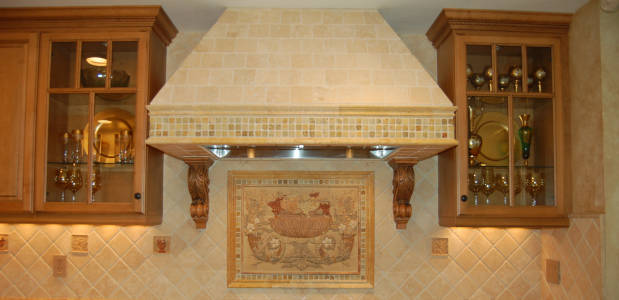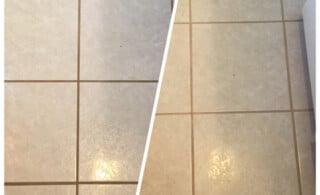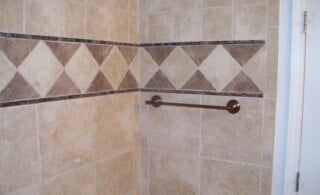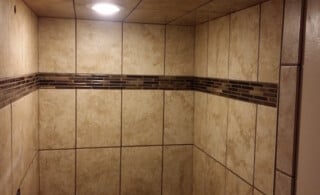
Ceramic tile is made from a process that is nearly as old as civilization. Once only used for pottery, ceramics are now used for everything from bowls to silverware to semi-conductors. Made from slabs of clay that are kiln fired to create their hard, durable exterior, ceramic tiles are one of the most popular, durable, and versatile types of tiling materials.
Some Details
Keep in mind that properly installed ceramic tiles can literally last the entire lifetime of a house. You might opt for a change of scenery after 70 years or so, but nevertheless, the tile itself won’t let you down.
The ceramic tile process infuses dyes and other coloring with its natural, earthy color to provide consumers with nearly any color imaginable. Ceramic tiles will surpass most other materials in terms of color options, and depending on the brand you choose, you can even have custom colors created. This is something that is difficult for stone, and, in some cases, porcelain to compete with.
Since ceramic tile is mainly comprised of earthen and domestic/industrial building materials, it typically has a competitive price mainly because it can be manufactured at scale. It’s perfect if you are in the market for an inexpensive, durable product with tons of options.
Your Options
Now that you have been sold on ceramic as a material, you need to know about your options. In overall tile installation there are five, but when we are just looking at the uninstalled material, there are only three: shape, finish, and size.
Tile Finish: The basics here are glazed or unglazed. Glazed ceramic tiles have hard, smooth surfaces that reject water and stains. The glaze is as the word suggests, meaning that there will be a glossy sheen. Sometimes this doesn’t suit the homeowner who is looking for something rustic and aged. However, for the Tuscan style kitchen or for those who want their vibrant tiles to be more colorful, glazed can do just the trick.
This isn’t to say that unglazed tiles won’t last as long or that this option is second-rate. While the glaze can add to the durability, you are not worse for the wear without a glaze. This is simply a preference.
Tile Shape: To begin, know that you can truly get any shape you want. The farther away you go from square or rectangle will drive up the drive, but literally any shape is possible. From brick shape to subway tile to plain old square, this is an option. If you are thinking about a particular pattern, you better check with a tile contractor to make certain that what you have drawn up at home can truly be made to fit that pattern.
Tile Size: For sake of discussion, we’ll imagine that you have a square shape. The cheapest-sized tile you can buy is 12″x 12″, or one foot tiles. They package cheaper and many kilns are set-up to handle this size, so everything is optimal at this size. The smaller you go, tiles might seem cheaper, but the installation will cost more because there is more tile to lay, more cuts to make, etc. So keep this in mind. The difference between one foot and four inch is not going to be massive for a countertop or mudroom, but if you are laying yards of tile, soon that small margin becomes substantial. This is why you always see one foot tiles in buildings.
Installation Options
The last two options that you’ll have are pattern and grout color. Patterns from one-tile, two-tile, and three-tile to borders, herringbone, basket weave, and whatever else you can dream up, there are dozens out there. Keep in mind that the more difficult the pattern, the higher the price. If you have one color, one size, on a diagonal pattern, the installation can go quickly. If you start adding different sizes, shapes, and a funky pattern, this is more job time for your contractors and more time billed for you. We’re not trying to talk you out of some new and cool patterns, just letting you know that they don’t come free.
Lastly, you’ll have grout color to choose from. Your contractor will have a good idea of what color to use if you are tired of making decisions by this point, but just remember that you want people to notice the tile, not the grout, so try to pick something that won’t upstage your beautiful ceramic tiles.
 Cracked Grout: Causes, Repair & Replacement
Cracked Grout: Causes, Repair & Replacement  The Basics of Ceramic Wall Tile Installation
The Basics of Ceramic Wall Tile Installation  Stunning Travertine Tile
Stunning Travertine Tile  Ceramic Wall Tiles
Ceramic Wall Tiles  Mirror Doors and Tile
Mirror Doors and Tile 

I want to rough up ceramic tile so paint will bond to the ceramic tile surface – how best to do it?